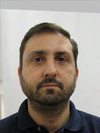Dissertação
{en_GB=Change Detection Through Intra-urban Classification Of Very High Resolution Satellite Images} {} EVALUATED
{pt=As imagens de satélite oferecem às grandes cidades a capacidade de adquirir facilmente todo o seu território com uma boa resolução (70 cm para os satélites Pleiades), com atualizações regulares que permitem a deteção automática de alterações. Na sequência do plano "Zéro Artificialisation Nette", proposto pelo Ministério Francês da Transição Ecológica, governos municipais estão à procura de soluções para medir a artificialização de solos anualmente e com precisão. No presente trabalho, é proposta uma ferramenta para ajudar a monitorizar a utilização de solos e compreender o fenómeno da artificialização nas metrópoles, com base no processamento de imagens Pleiades. A ferramenta recebe duas imagens de alta resolução de uma região em instantes de tempo T1 e T2, e produz um mapa, que indica, por pixel (0,5 m), superfícies que foram artificializadas ou naturalizadas entre T1 e T2. Este objetivo é atingido em três operações: a conversão das imagens num formato comparável normalizado através de calibração e correções; a segmentação das imagens corrigidas em objetos semanticamente significativos com um nível superior de abstração, através de segmentação de aprendizagem profunda; e a deteção de alterações entre as imagens segmentadas. A solução proposta gera mapas de artificialização que identifiquem corretamente regiões artificializadas e naturalizadas, com uma resolução espacial mais elevada do que a solução de referência atual: CORINE Landcover Dataset. A solução é também aplicável em outros tópicos urbanos e está atualmente a ser testada em projetos do CNES em Toulouse, Paris e Senegal., en=Satellite images offer big cities the ability to easily acquire their entire territory at a good resolution (70 cm for the Pleiades satellites), with high frequency updates that allow the automatic detection of certain changes. Following the “Zéro Artificialisation Nette” biodiversity plan proposed by the Ministry of Ecological Transition in France, municipal governments are searching for solutions to measure soil artificialisation yearly and accurately. In this work, a tool is proposed to help monitor land use and understand the artificialisation phenomena in metropolises, based on the processing of Pleiades images. The tool receives as inputs two very high-resolution satellite images of a region at times T1 and T2 and produces a change map, which indicates, at a pixel-level (0.5 m), surfaces which have been artificialised or naturalised between T1 and T2. It is composed of three core modules: a preprocessing module, responsible for converting the input images in a standardised comparable format, through calibration and corrections; an image segmentation module, responsible for segmenting the input images into semantically meaningful objects at a higher level of abstraction, through deep learning segmentation; and a change detection module, responsible for performing a change detection analysis between the feature maps. It is shown that the proposed solution can generate artificial maps which correctly identify artificialised and naturalised regions, with a higher spatial resolution than the current benchmark solution: CORINE Landcover Dataset. The solution is also applicable in other urban topics and is currently being tested in CNES projects in Toulouse, Paris and Senegal.}
dezembro 6, 2022, 11:0
Publicação
Obra sujeita a Direitos de Autor
Orientação
ORIENTADOR
Alexandre José Malheiro Bernardino
Departamento de Engenharia Electrotécnica e de Computadores (DEEC)
Professor Associado


